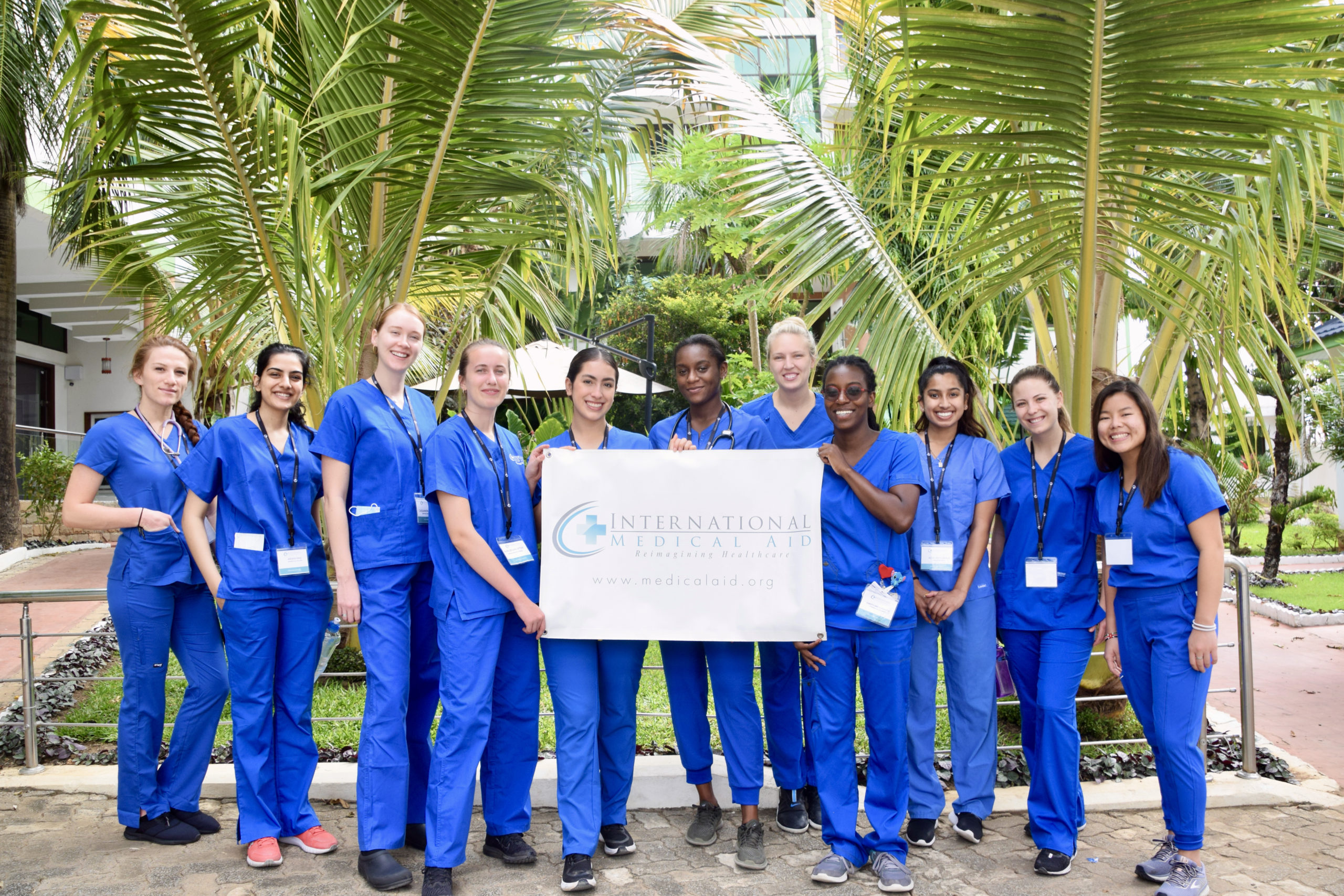You will face the Medical College Admissions Test if you’re an aspiring physician. Known by its acronym MCAT, this exam aids medical schools in assessing whether you are sufficiently prepared for a medical education and career.
Naturally, you wonder what is a good MCAT score? Not one specific score answers that question. It depends upon factors, including the medical school to which you apply. If you approach or exceed the average MCAT score, you will likely find a medical school seat somewhere. Yet, as many applicants may find themselves with a what is a good MCAT score, your undergrad grade point average and experiences also contribute to your profile as a medical school candidate.
What is On the MCAT?
Success in medical school and the profession turns on your command of scientific concepts and methods and the ability to research and turn data and observations into treatment plans and other conclusions. To that end, the MCAT seeks to evaluate your mastery of the science involved in medicine and reasoning.
The 7.5 hours (450) minutes of multiple choice questions that comprise the MCAT are divided into four sections. The first three address the extent of your knowledge in biology, biochemistry, psychology, organic and inorganic chemistry, physics and sociology. Section Four tests you on logic and reasoning, as do standardized tests for other professions. The sections of the MCAT bear these titles:
- “Biological and Biochemical Foundations of Living Systems”
- “Chemical and Physical Foundations of Living Systems”
- “Psychological, Social and Biological Foundations of Behavior”
- “Critical Analysis and Reasoning Skills”
Throughout the first three sections, there is an emphasis on ten “foundational concepts.” By summary, these building blocks for the study and practice of medicine touch upon the role of molecules, the organization of cells, tissues, and organs into systems, the relationship between human behavior and health, and the ties of social and other factors on health. In the fourth section, candidates for medical school display an appreciation for scientific concepts, relationships between concepts, the scientific method of drawing hypotheses and conclusions, and scientific research.
How Do You Get an MCAT Score?
MCAT Score Range: The MCAT score range runs from 472 to 528. For each of the four sections, scoring starts at 118 and climbs to a maximum of 132. The median (or center) score for each section stands at 125.
Calculation: To arrive at your score, MCAT computes a raw score for each section based on the number of correct answers. You receive no deduction for wrong answers, as such are treated as if you had not answered the question at all. As such, MCAT encourages you to guess if you don’t comprehend the question sufficiently. Your raw score will be transformed for each section into a scaled score. MCAT scales the scores to account for changes in the degree of difficulty of tests from administration to administration.
Each of the scaled section scores are summed into one total scaled score.
Percentile Ranks: Determining what is a good MCAT score involves not only some absolute scaled MCAT score, but your score’s comparison to other test takers (i.e. those with whom you may compete for slots in a medical school). Your percentile measures how well you did in comparison with others.
Based on data from 2017 to 2019, those in the 50th percentile had a score of 501. The 50th percentile is another way of expressing the median score. That is, among all test takers in these years, nearly half of the test scores fell below 501 and half rose above this figure. If your score rests in the 96th percentile, that means roughly four percent of the examinees achieved a better MCAT score than you. During this period, those in the 96th percentile scored 518 out of a maximum 528.
What is a Good MCAT Score?
The higher your percentile, it seems the better your score. Yet, there are other methods for determining what is a good MCAT score.
Look at the Median or Average MCAT. In 2019-2020, out of 21,869 applicants who matriculated into medical schools, the average MCAT score was 511.5. This compares with an average MCAT score of 506.1 based on 53,371 medical school applicants.
Average MCAT Score for All Applicants and Matriculants to U.S. Medical Schools
| Academic Year | Medical School Applicants | Medical School Matriculants |
|---|---|---|
| 2023–2024 | 506.3 | 511.7 |
| 2024–2025 | 506.1 | 511.8 |
The average MCAT score or median of admitted medical students will vary by the particular school. Yale Medical School’s median stands at 518, while schools whose matriculating students scored 520 (on a median basis) include Harvard, Duke, and Stanford. Knowing the median MCAT score also allows you to learn the MCAT score range for schools, as the maximum score is 528. The competition for medical school slots can prove intense at schools where the median is high.
Check online or at the admissions office of the particular medical school for the average MCAT score of those admitted to evaluate how your MCAT score compares with others. Through a subscription offered by the American Association of Medical Colleges, you can look at the average MCAT score of students who matriculate and other admissions standards for particular medical schools.
Medical schools consider undergraduate GPA scores in medical school admissions. Theoretically, a high GPA might counter the potential negative effects of a low MCAT score. As a practical matter, though, a medical school applicant with a higher MCAT score usually had a higher GPA than an applicant with a lower GPA.
What if You Don't Have a Good MCAT Score?
Your MCAT score and GPA weigh considerably to medical school decision-makers, as they represent relied-upon predictors of success. An MCAT Score below the average of those matriculating can make your admission more difficult, but not necessarily impossible. If you have concerns about whether you have a good MCAT score or grade-point average, your extra-curricular activities can help your application. In actuality, these factors outside of your grades and MCAT test play a significant role with medical schools considering prospective students. Many schools include certain extra-curricular activities among the minimum requirements for admission.
MCAT and GPA Grid for Applicants and Acceptees to U.S. Medical Schools, 2017-2018 through 2019-2020
| Total GPA | 472-485 | 486-489 | 490-493 | 494-497 | 498-501 | 502-505 | 506-509 | 510-513 | 514-517 | 518-528 | All Applicants |
|---|---|---|---|---|---|---|---|---|---|---|---|
| 3.80-4.00 | 3.1% | 3.6% | 9.4% | 20.1% | 33.2% | 49.7% | 64.5% | 77.8% | 85.3% | 90.1% | 67.1% |
| 3.60-3.79 | 1.0% | 1.5% | 5.1% | 12.7% | 25.2% | 37.4% | 52.2% | 67.1% | 76.2% | 83.5% | 49.5% |
| 3.40-3.59 | 0.5% | 1.0% | 3.8% | 9.2% | 19.8% | 28.4% | 40.2% | 54.7% | 65.1% | 73.2% | 34.4% |
| 3.20-3.39 | 0.2% | 0.6% | 2.7% | 7.8% | 16.4% | 22.7% | 31.9% | 43.1% | 54.2% | 60.5% | 23.4% |
| 3.00-3.19 | 0.0% | 0.4% | 1.9% | 6.7% | 13.2% | 19.7% | 27.3% | 36.0% | 45.5% | 52.4% | 17.6% |
Here are the categories of extra-curricular activities that medical schools may seek in their candidates:
Shadowing
As a shadow, you observe physicians, nurses, and other medical or health professionals in practical settings. You see the collection of vital statistics, hear the questions asked of patients and their answers and witness the diagnoses and treatments rendered. These experiences have the obvious benefit of placing you in the midst of the rigors and pressures of medical practice and the delivery of healthcare. Additionally, shadowing demonstrates to medical schools that you are committed to the medical field as a career even after having seen the hectic side of the practice.
When you choose to shadow, bear in mind these tips to reap the benefits:
- Accept any invitation by a physician or professional to shadow.
- Avoid interference with the provider as you shadow. This means don’t ask questions or offer suggestions in the presence of the patient. You should save your inquiries for times when just you and the physician meet.
- Consider shadowing in multiple settings, such as a hospital, clinic or office, and across multiple specialties.
- Make notes of you what you see, hear and learn.
Volunteer
Volunteering at clinics or hospitals yields some of the same benefits as shadowing. Whereas shadowing puts you primarily as an observer, volunteer experiences allow you to perform actual tasks. Depending upon the setting, you may be asked to accompany patients, greet families, deliver flowers or supplies, change bed linens, stock supplies and perform certain clerical duties.
If you volunteer in a hospice facility, you will be required to perform at least five hours of patient care in accordance with the regulations of Medicare and Medicaid.
In highlighting volunteering, do not ignore your participation with organizations that raise funds or provide more general public health and patient education. These organizations may include the American Heart Association or groups dedicated to cancer awareness and treatment.
Research
When you conduct it under a credentialed supervisor, research experiences illustrate your respect for and skill with the scientific method. Ideally, you want to engage in research that involves health or medicine. Examples might include studying the causes of specific infections or diseases and testing potential medicines or other treatments. In research, you might collect data and record observations. These are the skills used especially by physicians who study the causes and effects of illnesses or conduct trials to develop revolutionary treatments.
Leadership
Your extracurricular activities should include those where you have demonstrated leadership. As an undergrad, you may have served as class president, a member of student government or the head of some student organization. Leadership roles in community or public service organizations may carry additional weight with admissions committees. Such experiences expose you to initiatives such as fundraising or public education that promote access to health and healthy lifestyles.
Internships
A summer or other pre-med or health internship places you in a structured setting to perform health or medical research or assist in rendering health services. You can find opportunities from hospitals, medical schools and nonprofits providing healthcare domestically and abroad). With many nonprofits or charities come internships to work in underserved or impoverished areas.
Most Recent MCAT Statistics and Admissions Data (as of March 2025)
MCAT Score Percentile Ranks (2024–2025)
Current MCAT percentile ranks (effective May 1, 2024 – April 30, 2025) are based on combined results from 2021, 2022, and 2023 test takers. Key points from the distribution include:
Median (50th percentile) – Total score ≈ 501 (about the midpoint of all test takers).
Mean (average) – 500.7 (with a standard deviation of ~11). This is very close to the median, indicating a roughly symmetric score distribution.
75th percentile – Total score ≈ 509 (around the top quartile). In other words, about 25% of test takers score 509 or above.
90th percentile – Total score ≈ 515 (around the top 10% of examinees). Scoring 515+ places an examinee roughly in the 90th–91st percentile of all testers.
99th percentile – Total score ≈ 522 (about top 1%). The highest possible score 528 corresponds to the uppermost percentile (99–100th percentile).
These percentile ranks are updated annually on May 1 to reflect the most current three years of data. As an example, a 508 total score is about the 73rd percentile of recent examinees, meaning roughly 73% of test takers scored 508 or lower. This annual updating ensures that the percentile associated with a given score remains stable and meaningful over time.
Average MCAT Scores for Applicants and Matriculants
According to the latest data, medical school applicants have a mean MCAT around 506, whereas matriculants (accepted students) average around 511–512 on the MCAT. In the 2023–2024 application cycle, for instance, the mean total MCAT score was about 506.3 among all applicants, compared to 511.7 among those who matriculated (enrolled). For the 2024–2025 cycle, the figures are similar (approximately 506.1 vs. 511.8). This gap highlights that students who ultimately get accepted tend to have MCAT scores well above the overall applicant average.
Over the past decade, average MCAT scores for matriculants have trended upward. For example, the mean MCAT for enrolled students was around 508.7 in 2016–2017, rising to roughly 511–512 in recent years. Successful applicants now typically score around the 73rd percentile or above (about 508+) on the MCAT. In fact, the average MCAT among matriculants corresponds to roughly the 83rd percentile (~512) of all test takers. This reflects the increasing competitiveness of medical school admissions, as incoming classes are achieving slightly higher MCAT scores each year.
It’s worth noting that the MCAT total score range is 472 to 528, with 500 set near the median by design. Each of the four MCAT sections is scored 118–132, and total scores are the sum (centered around ~500 mean). The current matriculant average of ~512 indicates that accepted students typically score about 11–12 points above the mean of all test takers.
Changes in MCAT Format and Scoring Methodology
The MCAT underwent a significant overhaul in 2015 (often called “MCAT2015”), and there have been no major format or scoring changes since that implementation. Key changes introduced with the 2015 version include:
New Content Sections
The exam expanded to four sections, adding the Psychological, Social, and Biological Foundations of Behavior section to cover behavioral and social sciences. The other three sections (Chemical & Physical Foundations of Biological Systems; Critical Analysis and Reasoning Skills; Biological & Biochemical Foundations of Living Systems) correspond to the natural sciences and verbal reasoning tested in previous versions, but with updated content. The older MCAT (pre-2015) had only three multiple-choice sections and an optional writing sample (the writing section was removed in 2013 to prepare for this change).
Revised Scoring Scale
Along with the content changes, AAMC implemented a new scoring scale for the MCAT. Instead of the old 1–15 per section (3–45 total) scale, the new MCAT is scored from 472 to 528 for the total score (with each of the four sections scored 118–132).
The scale was set so that 500 is approximately the midpoint each year. This means that a 510 on the new exam does not directly equate to a specific score on the old exam – the entire exam content and score meaning changed with the 2015 redesign. The AAMC explicitly cautions against trying to convert new MCAT scores to the old scale, because the new exam tests different concepts and skills, and its scores carry a different meaning in terms of examinee ability. (For reference, under the old MCAT the mean total score was around 25 on a 3–45 scale, whereas the new exam’s mean is ~500 on the 472–528 scale.)
Length and Format
The current MCAT is a longer exam (~7.5 hours total seat time) to accommodate the additional content. The question formats remain multiple-choice. There is no essay on the current exam (the prior Writing Sample section was removed). Despite the length, each section is separately timed and scored, and the scoring methodology (scaled scoring) ensures consistency across different test dates. There is no grading on a curve; instead, scoring uses equating so that a given scaled score reflects the same performance level no matter when the test is taken.
Since 2015, the MCAT format and scoring have remained stable. Even during the COVID-19 pandemic in 2020, when the AAMC temporarily shortened the MCAT exam for safety reasons, the scoring system was left unchanged. The shortened 2020 exams still used the same 472–528 scoring scale and were psychometrically adjusted so that students received the same type of scores as they would on the full-length exam.
In other words, a 510 on the shortened 2020 MCAT had the same meaning as a 510 on any other administration. No content was removed from scoring – only the number of experimental (unscored) questions and the total length of the exam were reduced, with no changes to the scoring methodology or score interpretation. Aside from this temporary adjustment in 2020, there have been no additional changes to MCAT scoring or format since the 2015 overhaul.
Admissions Trends: MCAT vs. GPA and Extracurricular Factors
Medical school admissions remain highly competitive, and recent trends show that successful applicants excel in both MCAT and GPA while also showcasing substantial extracurricular achievements:
Strong Academic Profiles: Entering medical students today have excellent MCAT scores and GPAs. For the most recent cohort (2024–2025 entering class), the mean MCAT for matriculants is ~512 and the median undergraduate GPA is around 3.86.
These academic metrics have been inching upward – for example, the median GPA of 3.86 is slightly higher than in prior years, and the mean MCAT (~512) is about the same as last year’s record high.
This reflects an applicant pool in which many students have near A-average GPAs and MCAT scores in the top 10–20% of all test takers. By contrast, the average GPA among all applicants is lower (around 3.6–3.7), and the average MCAT for all applicants is ~506 as noted above, which underscores how the matriculants (those accepted) tend to be a self-selecting stronger subset academically.
MCAT vs. GPA – Both Matter
Data from the AAMC show that higher MCAT scores and higher GPAs independently boost the chances of admission. Admissions committees consider both metrics together. For instance, applicants with an MCAT in the 518–528 range (top few percent) and a GPA of 3.8+ had an acceptance rate around 83–84% in recent cycles.
In contrast, an applicant with a much lower MCAT (below 500) and a lower GPA (say below ~3.4) has a single-digit probability of acceptance.
AAMC’s aggregated acceptance rate data illustrate a steady increase in acceptance odds as you move to higher GPA and MCAT brackets.
In other words, strong MCAT and GPA together give the best chances – and neither can fully substitute for the other. Even a very high MCAT may not overcome a low GPA (or vice versa) in many cases. For example, having an outstanding MCAT score (515+) cannot guarantee admission if an applicant’s GPA is very low, and similarly a 4.0 GPA alone won’t guarantee admission without a solid MCAT. Most successful candidates have both metrics in a competitive range (often MCAT 508+ and GPA ~3.7+), although there are exceptions on both ends. The overall acceptance rate across all applicants is around 44–45% in recent years, but this varies widely by individual academic profile.
Holistic Review and Extracurriculars
Numbers aren’t everything. Medical schools use holistic admissions review, meaning they consider the whole applicant, not just MCAT and GPA.
According to the AAMC, there is no single “cutoff” MCAT score that guarantees admission or denial – a high MCAT score alone does not guarantee acceptance, and conversely, students with somewhat lower scores can be accepted if other aspects of their application are exceptional.
Admissions officers look at experiences, leadership, research, volunteer service, clinical exposure, personal statements, and letters of recommendation in addition to academic metrics.
Recent data demonstrate just how significant these extracurricular and personal factors are: the 2024 entering class collectively completed over 16.4 million hours of community service, which averages to about 709 hours of volunteer service per matriculant.
Many also bring substantial research experience and other achievements. This emphasis on robust experiences and attributes means that two applicants with identical MCAT/GPA can have different outcomes in admissions depending on their broader resumes and fit with a school’s mission.
Recent Applicant Pool Trends
In the early 2020s, medical school applications surged (notably a spike in the 2020–2021 cycle), a phenomenon some dubbed the “Fauci effect.” Although application volumes have since leveled off or declined slightly from that peak, they remain historically high. Class sizes at U.S. medical schools have grown marginally to accommodate more students, but admissions remain very selective. For the 2024–2025 cycle, the number of first-time applicants ticked up about 2.3%, and total matriculants reached a new high (~23,000 nationwide).
Despite a slight easing in admission rates (around 44–45% of applicants now matriculate, up from ~41% a few years ago), gaining acceptance is still challenging. High MCAT scores and GPAs are often necessary but not sufficient on their own. Applicants are encouraged to demonstrate well-rounded backgrounds – sustained clinical work, research publications or presentations, community engagement, leadership roles, etc., in addition to strong academics. Medical schools are increasingly emphasizing diversity and holistic excellence, so MCAT and GPA, while critical, are only two components of a successful application. As the AAMC notes, “your MCAT score is just one piece of your total package as an applicant” and is always considered in context of your other qualifications. The prevailing trend in admissions is a balanced approach: quantitative metrics (MCAT/GPA) set the academic threshold, and qualitative factors (experiences, essays, interviews, attributes) often determine the final outcome among academically qualified candidates.
When you undertake research or service-based internships or other extracurricular opportunities, expand your focus beyond merely accumulating hours or a list of agencies. Consider your career goals, learning about different areas of practice specialties and the scope and range of duties you will undertake in any particular program. Those activities and projects should hone knowledge and skills you will employ in the medical profession. Simply listing organizations and dates without any true appreciation for what happens in the practice of medicine does not demonstrate your qualifications to medical schools. Further, with these extracurricular experiences come hands-on education and knowledge that may actually prepare you to achieve a competitive MCAT score.
AAMC – “Percentile Ranks for the MCAT® Exam (Effective May 1, 2024 – April 30, 2025)”. (Association of American Medical Colleges) – Link
AAMC News – “Medical school enrollment reaches a new high” (Jan 2025, by Patrick Boyle). (Latest data on applicants, matriculants, MCAT/GPA averages, and service hours) – Link
AAMC – “Top 3 Myths about MCAT® Scores – Busted.” (Explains changes with new MCAT and holistic use of scores in admissions) – Link
Are you interested in pursuing a career in medicine? If so, then contact us today at admissions@medicalaid.org to learn how we can help you create a highly unique application that can get the attention of elite medical school admissions’ committees. Visit our website to learn more about our life-changing pre-medical internships abroad and our medical school admissions consulting services.





